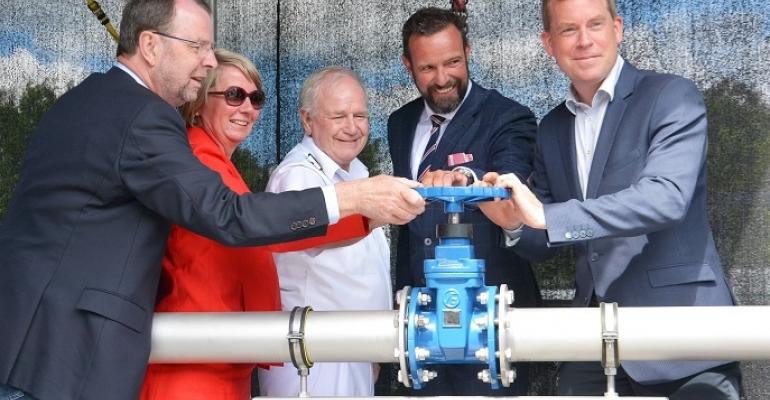The formal inauguration took place during a double call of TUI Cruises' Mein Schiff 3 and Mein Schiff 6.
Along with AIDA Cruises and Phoenix Seereisen, TUI has already been discharging sewage regularly at the port. Last year the three operators accounted for a total of 10,500 cbm of sewage there.
Starting in 2021, sewage discharge in port—or, alternatively, on-board treatment to very high standards—will become mandatory for passenger ships operating in the Baltic. For newbuilds, the regulation takes effect in 2019.
Numerous officials including the Kiel's mayor, port managing director Dirk Claus and TUI Capt. Kjell Holm attended the inauguration ceremony. Claus called the new reception facility an important contribution to preserving the Baltic Sea.
Extensive testing and a study in cooperation between the Port of Kiel and Unitechnics, a company specialized in sewage network and technology engineering, preceded the facility's implementation. Components of the reception plant include new compression-proof lines along both berths of Ostseekai, along with a 75 cbm reservoir complete with analysis and treatment technology.
In this reservoir, the temporarily stored sewage is ventilated with compressed air and active oxygen. If necessary, sodium hydroxide solution can be added to regulate the pH value.
The complete sewage network and reservoir system are tightly closed, with hydrogen sulfide extracted from its exhausts by means of a filter system and a special absorber. The treated exhausts are derived from the plant through a specially installed chimney. After analysis and pre-treatment in the reservoir, the received sewage is analyzed/monitored once more before being pumped to an interconnecting point and then into the municipal sewage network, which takes it to Kiel's central purification plant at Bülk for further treatment.
According to Claus, hardly any other cruise port is currently able to receive such huge amounts of sewage so Kiel is taking a leading role in providing port reception facilities.
Copyright © 2024. All rights reserved. Seatrade, a trading name of Informa Markets (UK) Limited. Add Seatrade Cruise News to your Google News feed.


